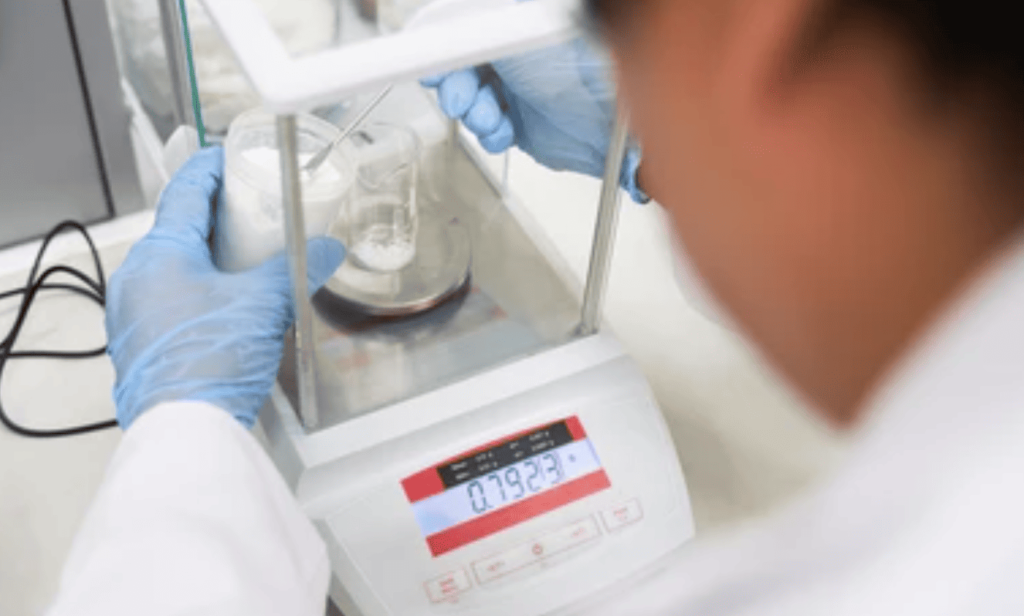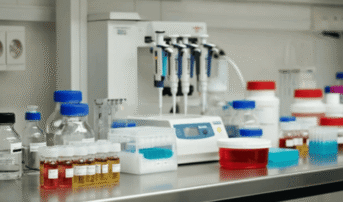Contents
When working with HEPES (CAS NO: 7365-45-9), it’s essential to understand not just its benefits but also its potential drawbacks. In my journey with DALO CHEM, I’ve encountered various challenges associated with HEPES that every researcher should be aware of.
HEPES, a widely used buffering agent in biological research, offers stability in physiological pH ranges. However, it isn’t without its disadvantages. Some of the key drawbacks include potential interference with cellular processes, limited temperature stability, and high cost compared to alternative buffers. Understanding these limitations can help in making informed decisions for your experiments.
Let’s delve deeper into the various aspects of HEPES and explore its shortcomings.
What is HEPES?
HEPES is a buffering agent commonly used in biological and biochemical research to maintain the pH of solutions.
HEPES, short for 4-(2-hydroxyethyl)-1-piperazineethanesulfonic acid, is a zwitterionic organic chemical buffering agent. It’s favored for its ability to maintain a stable pH in biological systems, especially in cell culture and enzymatic reactions.
Understanding HEPES is crucial for optimizing your experiments. Let me share some insights on its structure and function.
Chemical Structure and Properties
HEPES has a pKa 1of 7.5, making it effective in the physiological pH range. Its zwitterionic2 nature reduces interactions with proteins and other biomolecules, which is why it’s widely used in cell culture media3.
| Property | Value |
|---|---|
| Chemical Formula | C₈H₁₈N₂O₄S |
| Molecular Weight | 238.3 g/mol |
| pKa | 7.5 |
| Solubility | Highly soluble in water |
Despite its usefulness, HEPES does have some limitations that can impact your research outcomes.
What is HEPES used for?
HEPES is primarily utilized as a buffering agent in various biological and chemical applications.
Researchers use HEPES to stabilize the pH in cell culture media, enzymatic reactions, and other biochemical assays. Its ability to maintain a consistent pH is vital for experiments that require precise environmental conditions.
Let’s explore the diverse applications of HEPES and how its usage can sometimes present challenges.
Applications in Research
HEPES is extensively used in:
- Cell Culture: Maintaining pH stability for optimal cell growth.
- Protein Purification4: Ensuring consistent conditions during chromatography5.
- Enzymatic Assays: Providing a stable environment for enzyme activity measurements.
However, its usage is not always straightforward, especially when dealing with sensitive biological systems.
| Application | Purpose |
|---|---|
| Cell Culture | pH stabilization for cell viability |
| Protein Purification | Consistent conditions for protein stability |
| Enzymatic Assays | Reliable enzyme activity measurements |
While HEPES is versatile, its limitations can sometimes outweigh its benefits in specific scenarios.
Does HEPES affect cell growth?
HEPES can influence cell growth under certain conditions, which is a significant consideration for researchers.
Yes, HEPES can affect cell growth by altering the osmolarity and interacting with cellular components. These interactions can lead to unexpected results, especially in long-term cell cultures.
Understanding how HEPES impacts cell growth is essential for maintaining the integrity of your cell-based experiments.
Impact on Cellular Functions
HEPES can:
- Alter Osmolarity6: High concentrations may lead to osmotic stress.
- Interact with Proteins: Potentially affecting protein function and signaling pathways.
- Induce Cellular Stress: Prolonged exposure can stress cells, impacting growth and viability.
Balancing HEPES concentration is key to minimizing its adverse effects on cells while still benefiting from its buffering capabilities.
| Effect | Description |
|---|---|
| Osmolarity Changes | High HEPES concentrations can disrupt cell homeostasis |
| Protein Interactions | May interfere with protein folding and function |
| Cellular Stress | Long-term use can lead to reduced cell viability |
Being mindful of these factors can help in designing experiments that mitigate the negative impacts of HEPES on cell growth.
What areas is HEPES not suitable for?
HEPES isn’t the best choice for every application, and knowing its limitations can save you time and resources.
HEPES is unsuitable for applications requiring extreme temperature stability or where metal ion binding is a concern. Additionally, its high cost can be a barrier for large-scale projects.
Identifying scenarios where HEPES falls short can guide you in selecting more appropriate alternatives.
Limitations in Specific Conditions
HEPES may not be ideal when:
- Temperature Fluctuations Occur: It has limited stability at high temperatures.
- Metal Ions are Present: Can chelate with metal ions, affecting reactions.
- Cost is a Constraint: More expensive compared to other buffering agents7.
Choosing the right buffer involves weighing these limitations against the specific needs of your experiment.
| Limitation | Reason |
|---|---|
| Temperature Stability | Degrades at high temperatures |
| Metal Ion Interaction | Can bind with metal ions, disrupting reactions |
| Cost | Higher price point compared to alternatives |
Exploring other buffering agents might be beneficial when HEPES doesn’t meet your experimental requirements.
Conclusion
While HEPES is a reliable buffering agent, it’s important to consider its disadvantages. By understanding these limitations, you can make better-informed decisions for your research projects.
-
I linked “pKa” so you can easily learn more about this critical chemical property and its role in buffer solutions like HEPES. ↩
-
link “zwitterionic” to help you understand how this characteristic of HEPES affects its interactions in biological systems. ↩
-
link “cell culture media” so you can explore more about the environment HEPES is used in to support cell growth. ↩
-
I linked “protein purification” to give you a deeper insight into one of the key applications of HEPES in maintaining protein stability. ↩
-
This link to help you understand the process where HEPES ensures consistent conditions during protein purification. ↩
-
This link provide more information on how HEPES can alter osmotic conditions, impacting cell health. ↩
-
This link to help you explore alternatives to HEPES when it doesn’t fit your experimental needs. ↩










